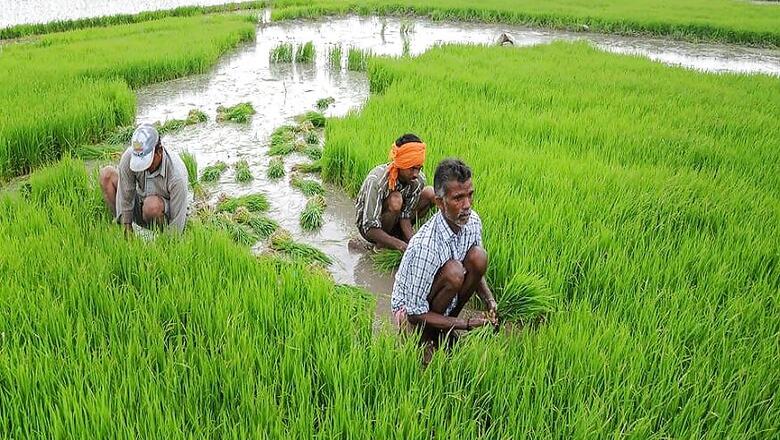
views
For each degree Celsius increase in temperature, the global yields of wheat and rice will reduce by 6 per cent and 3.2 per cent respectively, found a study published in the American scientific journal ‘Proceedings of the National Academy of Sciences’ (PNAS) in 2017.
The Food and Agricultural Organisation (FAO) underscored that the number of malnourished people in drought-sensitive countries like India had increased by 45 per cent in the last seven years, in a report released last week. Malnutrition was found to be the top cause of death and disability in India, as per the 2017 Global Burden of Disease Study by the University of Washington.
In August, during the launch of a special report on climate change and land by the UN Intergovernmental Panel on Climate Change (IPCC) in Geneva, experts pointed out that people living in already degraded or desertified areas are increasingly negatively affected by climate change. Food security will increasingly be impacted, warned the report, with yields declining especially in the tropics, along with inflation and reduced nutrient supply.
A key way to counter this is growing climate-resilient crops.
What is climate resilient agriculture?
Smart agriculture is a revolution in the agriculture industry that helps to guide actions required to modify and reorient agricultural systems to effectively support development and guarantee food security in an ever-changing climate.
Known more popularly as climate resilient agriculture, it implies that the crops grown should be able to withstand whatever the external climate throws at them – droughts, floods or even harsh cold weather.
It was adopted by India in 2011, and the National Initiative on Climate Resilient Agriculture, or NICRA, was formed under the ministry of agriculture to enhance resilience of Indian crops to climate change and climate vulnerability through strategic research and technology demonstration.
How is it different?
How the ‘resilience’ part works is that the practice is taken down and taught to the most basic level of agriculture – the farmers who grow the crops. Communities or systems that are directly exposed to hazards should be able to anticipate the risks they face, and be able to respond when disaster strikes. They should adapt to changing risks and situations, and be able to transform to address underlying factors and figure out the root causes of risk.
A United Nations report in 2019 found how small, marginal-scale farmers were able to bounce back from drought when they switched to climate resilient crops.
Have there been successes in India?
In the Marathwada region of Maharashtra, which is drought-prone, farmers saw a 25 per cent increase in crop yield because they planted a wider variety of crops, used organic methods of farming, and implemented water and soil-conservation measures. .
But it isn’t limited to just growing alternate crops, resilient crops can be grown on engineered crops, which can withstand more resistance to the climate. Small scale farmers in Bundelkhand saw a 20 per cent increase in yield after improved seeds were introduced.
Not just India, in Middle and North East Africa (MENA), where crop cultivation depends heavily on rainfall, small-scale farmers who produce the bulk of the domestic supply, found that climate resilient farming communities are more sustainable.
What lies ahead?
Realising the necessity of switching to climate resilient farming, companies are now lending a helping hand to further implement this practice. In India, the United States Agency for International Development (USAID) is collaborating with Skymet Weather Services Private Limited (Skymet) for a project on “Partnership in Climate Services for Resilient Agriculture in India” (PCSRA).
It aims to digitize the archaic methods still employed by the Indian farmer and develop new risk mitigation products through weather forecasts, agro-advisories and insurance facilitation.
The Cornell College of Agriculture and Life Sciences also focuses on scaling up of the System of Rice Intensification (SRI), with focus on West Africa. With the effects of climate change becoming, at the same time more unpredictable and more devastating, climate resilient agriculture may be the only way for sustenance.
This story is part of Covering Climate Now, a global collaboration of more than 250 news outlets to strengthen coverage of the climate story.




















Comments
0 comment